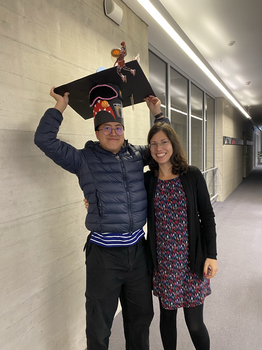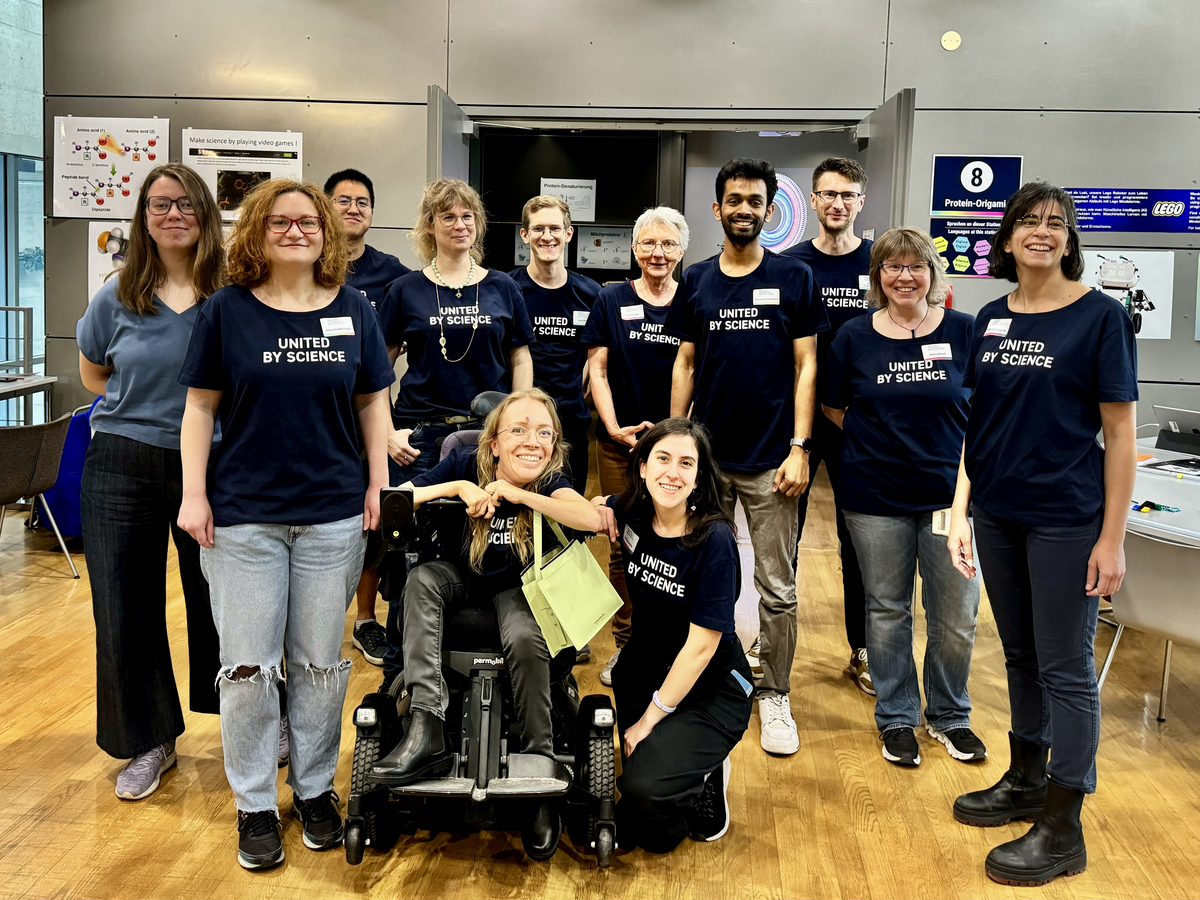The recent AI breakthrough of AlphaFold2 has revolutionized 3D protein structural modeling, proving crucial for protein design and variant effects prediction. However, intrinsically disordered regions-known for their lack of well-defined structure and lower sequence conservation-often yield low-confidence models. The latest Variant Effect Predictor (VEP), AlphaMissense, leverages AlphaFold2 models, achieving over 90% sensitivity and specificity in predicting variant effects. However, the effectiveness of tools for variants in disordered regions, which account for 30% of the human proteome, remains unclear.
In this study, we found that predicting pathogenicity for variants in disordered regions is less accurate than in ordered regions, particularly for mutations at the first N-Methionine site. Investigations into the efficacy of variant effect predictors on intrinsically disordered regions (IDRs) indicated that mutations in IDRs are predicted with lower sensitivity and the gap between sensitivity and specificity is largest in disordered regions, especially for AlphaMissense and VARITY.
Luppino F, Lenz S, Chow CFW, Toth-Petroczy A. Deep learning tools predict variants in disordered regions with lower sensitivity. BMC Genomics. 2025 Apr 12;26(1):367. doi: 10.1186/s12864-025-11534-9. PMID: 40221640; PMCID: PMC11992697.

Identifying functional motifs in disordered regions is challenging. With SHARK-capture, which is an alignment-free method to detect conserved SLiMs, we developed a new method which allows you to this.
Congratulations to Willis and Swantje and everyone else involved!
MPI CBG News Article: Interested in the full story. Read the latest CBG news article "SHARK-capture: Unveiling Hidden Motifs" here.
SHARK-capture is available as a Python package (bio-shark) and on GitLab (shark) where we provide bash scripts for parallelization on HPC and a colab notebook.
Chi Fung Willis Chow, Swantje Lenz, Maxim Scheremetjew, Soumyadeep Ghosh, Doris Richter, Ceciel Jegers, Alexander von Appen, Simon Alberti, & Agnes Toth-Petroczy: SHARK-capture identifies functional motifs in intrinsically disordered protein regions. Protein Sci. 2025 Apr;34(4):e70091, DOI: 10.1002/pro.70091

Federica left our group after achieving her PhD. We wish you all the best on your new journey and for your future.
"Remember what they say, there's no shortcut to a dream. It's all blood and sweat and life is what you manage in between." (Broken Bells, 2010)

© Toth-Petroczy Group / MPI-CBG
Membrane-less organelles called biomolecular condensates are capable of concentrating hundreds of distinct proteins to carry out vital biological processes. Like oil droplets forming in water, these dynamic, liquid-like droplets form quickly, for example, by phase separation, creating temporary structures protected from the interior of the watery cell. Researchers have demonstrated in recent years they are involved in many physiological functions, such as DNA control, cell division, cellular signaling, and the nested structure of nucleoli in the cell nucleus. Therefore, researchers are increasingly using biomolecular condensates as a novel class of therapeutic targets.
...
Continue reading the full news article here
Hadarovich, A., Singh, H.R., Ghosh, S. et al. PICNIC accurately predicts condensate-forming proteins regardless of their structural disorder across organisms. Nat Commun 15, 10668 (2024). DOI: 10.1038/s41467-024-55089-x

Agnes Toth-Petroczy © Katrin Boes / MPI-CBG
The European Molecular Biology Organization (EMBO) announced the selection of 27 life scientists as the newest members of the EMBO Young Investigator Programme. Amongst them is Agnes Toth-Petroczy, research group leader at the Max Planck Institute of Molecular Cell Biology and Genetics (MPI-CBG) and the Center for Systems Biology Dresden (CSBD). The program supports young group leaders in Europe and beyond. The new young investigators will start in January, be active members of the program for four years, and become part of an international network of nearly 800 current and former EMBO Young Investigators, Installation Grantees, and Global Investigators. They carry out research across a wide range of life sciences topics, from cell and computational biology to immunology and neuroscience.
...
Continue reading the full news article here


We had a very busy November with 2 successful PhD thesis defenses. Congratulations to Willis and Federica for successfully defending their theses. Well deserved.

© Toth-Petroczy Group / MPI-CBG
A key goal in biology is to decipher the function of all proteins. By studying the relationship between protein sequences and function, we can understand which parts of a protein’s sequence or region give the protein certain functions. However, because there are more than 250 million proteins known to date (uniprot.org), it is not practical to experimentally test every one of them for function. In recent years, scientists have developed methods (alignment algorithms) that compare similar protein sequences, wherein the conserved regions—the most significant portions of proteins—are arranged into groups.
...
Continue reading the full news article here.
Chi Fung Willis Chow, Soumyadeep Ghosh, Anna Hadarovich, and Agnes Toth-Petroczy: SHARK enables sensitive detection of evolutionary homologs and functional analogs in unalignable and disordered sequences. PNAS, October 9, 2024, 121 (42) e2401622121, DOI: 10.1073/pnas.2401622121

Another paper publication celebration joined by Lena and HongKee from the Scientific Computing Facility. Thank you very much for your help and contribution. This time we had lunch on the CSBD rooftop.
Cedric Landerer, Maxim Scheremetjew, HongKee Moon, Lena Hersemann, Agnes Toth-Petroczy
deTELpy: Python package for high-throughput detection of amino acid substitutions in mass spectrometry datasets.
Bioinformatics, Volume 40, Issue 7, July 2024, btae424, https://doi.org/10.1093/bioinformatics/btae424

This year we participated @ The Long Night of Science. We had a science station together with the Von Appen Group, exploring different protein structures and functions among other things. Some of the interactive experiments at the station added some extra spice. We hope that we brought science a little closer to the public.

Cedric left our group after 5 very productive years to start a new job in industry. We wish you all the best on your new journey and for your future.
The genetic material, the DNA, is like a recipe book for making proteins. Sometimes, when cells are reading these recipes, they make mistakes. When they come across a stop sign that tells them to halt the production of a certain protein instead of stopping, the cells accidentally ignore the sign and keep making the protein, creating a longer version of the protein, which looks like a protein with a “tail”. These longer proteins might not work the same way as normal ones, leading to changes in how the cell behaves and to a change in how the cell functions.
...
Continue reading the full news article here.
Romero Romero, M.L., Poehls, J., Kirilenko, A. et al. Environment modulates protein heterogeneity through transcriptional and translational stop codon readthrough. Nat Commun 15, 4446 (2024). DOI: 10.1038/s41467-024-48387-x

Another paper publication celebration. Well done to everyone involved! This time we had a wonderful evening at the Altes Wettbüro in Dresden-Neustadt.
Maria Luisa Romero Romero, Jonas Poehls, Anastasiia Kirilenko, Doris Richter, Tobias Jumel, Anna Shevchenko, Agnes Toth-Petroczy
Environment modulates protein heterogeneity through transcriptional and translational stop codon readthrough.
Nat Commun, 15(1) Art. No. 4446, doi: 10.1038/s41467-024-48387-x (2024)

We had a great pizza party night celebrating Cedric's paper publication. Well done Cedric and everyone involved!
Cedric Landerer, Jonas Pöhls, Agnes Toth-Petroczy
Fitness effects of phenotypic mutations at proteome-scale reveal optimality of translation machinery.
Mol Biol Evol, 41(3) Art. No. msae048 doi: 10.1093/molbev/msae048 (2024)

Agnes has received an ERC Starting Grant to study the Evolution of Biomolecular Condensates!
Congratulations!
Click here for press release of MPI-CBG and the European Research Council.
We are going to hire new computational and experimental PhD students/scientists. If you are passionate about evolution and condensates, send applications to toth-petroczy@mpi-cbg.de.

Deep is leaving after working here for 3 years, first as a HiWi, Master student and then as a software engineer. We had many successful projects and fun activities together!
Good luck with your new adventure as a software engineer in Berlin!

Our model, PICNIC (Proteins Involved in CoNdensates In Cells) was trained to recognize proteins involved in in vivo biomolecular condensates.
PICNIC enables systematic detection of condensate proteins across organisms. See precomputed predictions for 14 common model organisms picnic.cd-code.org
Link to our preprint bioRxiv
Congratulations to Anna and all co-authors, Deep, Nadia and special thanks to Hari from Hyman lab for testing some top predictions in human cells!

Congratulations to Federica and big thank you to our collaborators at HMS, Ivan and Chris!
DeMAG predicts the effects of variants in clinically actionable genes by integrating evolutionary and structural features. Nature Comm 2023
CD-CODE is published @Nature Methods. Congatulations to all CD-CODE team members, especially to the first authors, Deep and Nadia!
This project was a beautiful collaboration of software engineers and computational and experimental biologists.
Read the story behind the paper.

Our review about phenotypic mutations is published in Protein Science.
Gongratulations to Sisi, Cedric and Jonas!

Congratulations to Deep for defending his Master thesis at the Computational Modeling and Simulations program at TUD!

Congratulations for defending your Master thesis at TUD and good luck with your PhD in Berlin!

Alejandro successfully defended his Masters thesis at TU Dresden. Congratulations!!! And good luck!